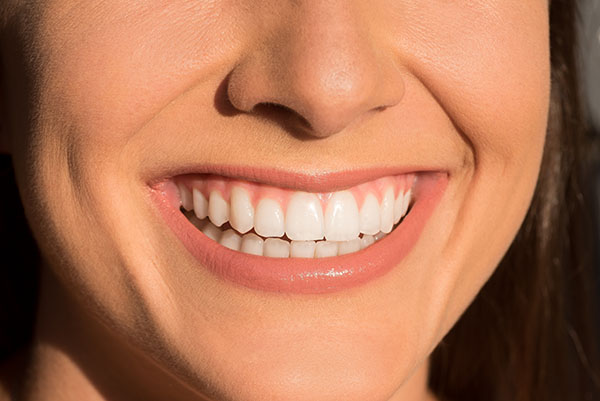3 Options for Dental Fillings

The process of removing decayed tooth material and replacing it with artificial material, called a dental filling, has been a successful way to fight against cavities for thousands of years. A cavity typically occurs when acid wears away the tooth structure and creates a hole in the enamel. Cavities are often painful, but they can sometimes go unnoticed for months before symptoms arise.
It is essential to treat tooth decay as quickly as possible. When left alone, cavities often progress and can lead to many complications, including:
- Weakened tooth structure
- Infections
- Gum disease
- The spread of decay to other teeth
- Tooth loss
In these situations, much more extensive dental work will likely be needed. However, a routine dental filling is often all that is required to treat most cavities. Over time, there have been many evolutions in the technology and materials used for dental fillings, but to this day, they remain a common practice and efficient way of treating tooth decay.
Commonly used dental fillings
Presently, you have three main options to consider for your dental filling: gold, amalgam, and tooth-colored. Each type has benefits and drawbacks to think about regarding its color, cost, and durability, so consult your dentist to decide which is right for you.
1. Gold
Gold fillings have been around for hundreds of years and for good reason. Gold is a very durable metal, so gold fillings hold up well under long-term use. These filings are also one of the more expensive options available since gold is a precious metal and comprises over 50% of most gold fillings. Color is something to consider with gold fillings too. The highly visible coloration is a turn-off for some and a desirable quality for others. Some people see it as an advantageous status symbol and others as a noticeable sign that they have imperfect teeth.
2. Amalgam
Amalgams are also called silver fillings because they are dark silver in color. Dental amalgams are metallic fillings made from a combination of mercury and other metals such as silver, tin, zinc, and copper. Many people express concern about the mercury in the filling, but there is no conclusive evidence that it is unsafe for the majority of people. Pregnant women, nursing women, people allergic to mercury, and people with certain neurological disorders may want to choose another filling option though. An amalgam dental filling is still often a good option. They are quite strong and fairly inexpensive in comparison to other options. However, a significant number of people find the dark coloring unpleasant.
3. Tooth-colored
There are three main options for tooth-colored filling materials; composite resin, ceramic, and glass ionomer. The one great advantage these fillings have is that they are made to blend in with the tooth, so they are not easily detected by the naked eye. They range in toughness and cost as well. Ceramics are very tough but quite costly. Glass ionomer is fairly fragile and needs to be replaced around every five years but is usually less costly overall. Composite resin fillings sit in the middle of the other two in both their stamina and price. Glass ionomer fillings also have a unique advantage in that they are designed to be able to gradually release fluoride which helps strengthen teeth and prevent future cavities. Dentists often choose a glass dental filling for children because of this quality.
Conclusion
It is important to treat cavities as soon as possible to prevent unnecessary oral health problems. Routine visits to a dentist help ensure that tooth decay is caught in the early stages and easily treated with a filling. All three dental filling options work well to fill in the space left behind by tooth decay removal and have their advantages and disadvantages.
To choose which option is the one for you, there are many factors to consider, including appearance, location of the filling, budget, age of the patient, and more. You should carefully discuss them all with your dentist beforehand. A professional can offer insight into which selection may be appropriate for your individual situation.
If you suspect that you may have tooth decay and are developing a cavity, do not hesitate to seek professional dental care right away. Waiting too long will likely make matters worse. Treating a cavity with a dental filling is a routine procedure that can significantly improve your dental health, regardless of which type of material you choose.
Request an appointment here: https://www.johnscreekteeth.com or call Johns Creek Dentistry at (770) 623-1427 for an appointment in our Johns Creek office.
Check out what others are saying about our dental services on Yelp: Composite Fillings in Johns Creek, GA.
Recent Posts
According to an article in Live Science, the first known dental filling was created with beeswax more than 6,500 years ago. These days, the American Dental Association believes about 175 million fillings are completed every year. Although common, there are still some misconceptions about fillings. Understanding the benefits may help you to determine if receiving…
According to the Centers for Disease Control and Prevention, 90% of people develop a cavity by the time they reach the age of 20. A dental filling is often used as a treatment option for this very common dental issue. A filling is relatively easy to place and effectively treats tooth decay. While the treatment…
Dental fillings are made of artificial substances, and they are used to fill the holes in your tooth left due to decay. They can also fix damaged, cracked, or broken teeth. Fillings are needed to help restore the structure of your tooth and help aid in your dental health for years to come. A dental filling…
Dental fillings play a vital role in treating tooth decay. If tooth decay has progressed beyond its earliest stage, a filling will help restore the tooth to its former, healthy state.Tooth decay is damage caused by bacteria, which, when combined with food, causes plaque. Over time, the bacteria in the plaque form acids, which start…


